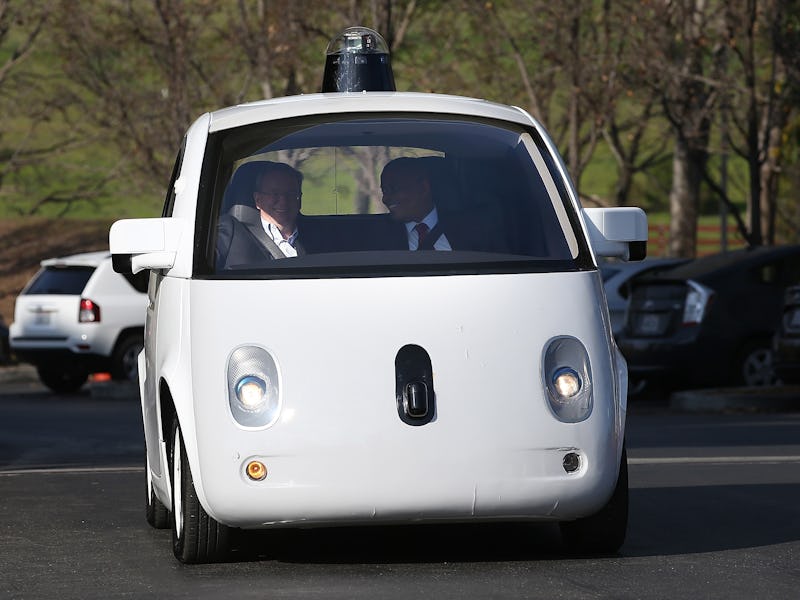Why AT&T's Blazing 5G Experiment Is Major For Self-Driving Cars
10Gbps is great for Netflix, but even better for collision detection.

AT&T has made big progress in its 5G trials, the next-generation mobile network expected to bring super-fast download speeds. The carrier announced today Monday that it has seen great success with current tests, reaching speeds of over 10 gigabits per second. That’s great news for smartphone addicts who need to stream Spotify and Netflix on the go — but it could also be major news for self-driving cars.
The company sees a future in which self-driving cars will need to communicate rapidly with the world around it. Other vehicles and objects, all running on the same cellular networks, will be able to help each other move around the city. AT&T says these initial tests have shown “positive signs” that 5G could be an ideal fit for the cars of the future.
The pieces are in place for 5G to play a crucial role in the self-driving revolution. In fact, some companies have gone further than AT&T; BMV claimed that 5G could be vital to self-driving cars. According to ComputerWorld, BMW’s head of automotive connectivity Sebastian Zimmermann said in February 2014 that a 5G network with device-to-device communication could help objects interact even when the network provider is out of range.
Ericsson, a partner with AT&T in its 5G tests, has also said that the future standard will be crucial for self-driving cars. Features like traffic mapping that can find the fastest route to a destination, or, cars that sense impending collisions based on other sources of information, will need a much faster network than currently available.
Another benefit of 5G could be data prioritization, Ericsson chief technology officer Ulf Ewaldsson told IDG News Service in January 2014. A child streaming Netflix in the backseat will be using the same network as the collision detection system, but the latter is clearly more important and should be prioritized by a cellular network. “Maybe we want to do this [movie streaming] six microseconds later,” he said.
On AT&T’s end, the company is making big strides to replacing 4G as the dominant standard, with a view to getting the standard ready over the next few years.
“Nokia is joining to help us test millimeter wave (mmWave), which we expect to play a key role in 5G development and deployment,” said Tom Keathley, a senior vice president at AT&T. “The work coming out of AT&T Labs will pave the way toward future international 5G standards and allow us to deliver these fast 5G speeds and network performance across the U.S.”